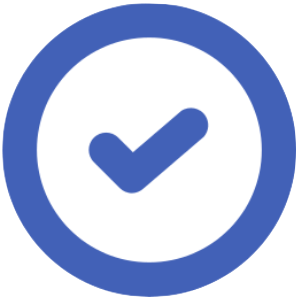 YOUTUBE VIDEO:
https://www.youtube.com/watch?v=-HtzWrwuHcI
YOUTUBE VIDEO:
https://www.youtube.com/watch?v=-HtzWrwuHcI
 Sleep ESL Lesson Plan Description
Sleep ESL Lesson Plan Description
OBJECTIVE & OVERVIEW
This free ESL lesson about sleep provides activities, PDF worksheets, and digital materials designed for intermediate B1-B2 students. In this lesson, students will:
- Talk about some habits that have a positive/negative impact on sleep
- Discuss a variety of questions about sleep
- Learn some vocabulary and phrases related to sleep
- Watch a video with tips on how to improve your sleep
- Study and use the present perfect continuous tense form to talk about lifestyle habits and problems
- Talk about lifestyle problems and suggest tips how to solve or improve them
PREVIEW & DISCUSSION
In the first part of this ESL lesson plan about sleep, students describe images depicting the routine of a young woman named Fiona. These images include Fiona waking up early, getting some sunlight after she wakes up, taking a nap in the afternoon, exercising, and drinking alcohol before going to bed. Then, students engage in a discussion about her habits and whether or not they have a positive or negative impact on her sleep quality.
The second part of this preview phase focuses on a general discussion about sleep. There are a variety of discussion questions designed to help students explore the topic and their own sleeping habits.
In the final activity on this page, students match some verbs to the phrases in some image descriptions. Under the images, there are descriptions. These include verbs/phrases such as “tossing and turning”, “dozing”, and “winding down”. All of the images and phrases are related to the topic of sleep.
VIEWING ACTIVITY
In the second part of this lesson, students watch a video offering tips to improve sleep. In the video, a woman offers 5 tips. There is a matching activity for students to match the first half of each tip with the corresponding second half.
In the second activity, there are questions that students can answer either by writing and speaking. All of the questions relate to the tips in the first part of viewing activity.
Finally, there is a section in which students must listen for detail. They choose the correct word they hear the woman use in her concluding thoughts about how to get better sleep.
DISCUSSION & GRAMMAR
Following the video, there are a few discussion questions for students to discuss. This includes questions on how useful and interesting the video was and how easy or hard it would be for students to implement the tips into their daily lives.
The lesson then moves on to grammar. In the grammar section, students read a problem that a woman named Bianca has been having with her sleep. In the description of her problem Bianca uses the present perfect continuous tense several times. See the example below:
I haven't been sleeping well at all recently! Over the past few nights, I've been lying in bed, tossing and turning, but I just can't sleep! Then I've been napping a lot during the day and I've been drinking a lot of coffee after my naps.
After, students answer a set of questions about the present perfect continuous.
In the third part of the viewing follow-up, students do a gap-fill activity using the present perfect continuous form. This is followed by an activity for students to suggest tips to the people in Part 3 who have been going through certain lifestyle problems. There are phrases provided for students to provide these tips, such as:
- I recommend…
- I suggest…
- Make sure to…
- It might be helpful to…
IMPROVE YOUR LIFESTYLE! WORKSHOP & ROLE PLAY
In this task-based communicative activity, students work with a classmate or teacher to address lifestyle problems. First, they choose two issues from a provided list, such as insomnia, unhealthy eating, high stress, excessive smartphone use, alcohol or tobacco use, lack of physical activity, or work-life balance. They discuss how these problems impact their lives or others and brainstorm potential solutions.
Next, students engage in a role-play exercise. Student A describes a lifestyle problem they’ve been experiencing, its impacts, and asks questions, using the present perfect continuous tense. Student B, acting as a friend or colleague, listens, asks further questions, and offers advice using phrases like "I suggest," "Make sure to," "I recommend," and "It might help to." After completing the role-play, students switch roles and repeat the exercise, ensuring both get to practice describing issues and giving advice.
BONUS LIFESTYLE DISCUSSION ACTIVITY
In the second option, there is a set of lifestyle discussion questions for students to choose from. In their discussions, they are instructed to use the present perfect continuous tense. An example of a question they can discuss is:
Have you been having any lifestyle problems or practicing any bad habit(s) recently?
If so:
- Describe these problem(s) / habit(s). How have they been affecting you?
- Have you been taking any steps to solve these problems or break these habits? If so, how? If not, what could you do?
If not:
- How have you been maintaining a healthy lifestyle?
- What good habits have you been practicing? How have they been affecting you?
- Do you know anyone who has been practicing some bad habits? If so, what would you recommend doing?
BENEFITS OF USING THIS SLEEP ESL LESSON:
Engaging Content: The lesson is perfect for intermediate B1-B2 students, with topics they can really relate to and find interesting.
Global Awareness: Students dive into the important issue of sleep and how it affects health, helping them understand lifestyle habits better.
Vocabulary Building: They get to learn and use specific sleep-related words and phrases, which boosts their language skills.
Interactive Learning: With images, discussions, a video, and role-play activities, students stay actively engaged and involved.
Practical Insights: The video on sleep tips offers real-life advice that students can use to improve their own sleep habits.
Grammar Focus: The lesson helps students practice the present perfect continuous tense in a way that feels natural and relevant.
 Video Description
Video Description
 Lesson Activities
Lesson Activities
Sleep, Habits, Lifestyle
Matching Tips, Short Answers, Word Choice
Images, Phrases, Verbs
Present Perfect Continuous
Improve Your Lifestyle Workshop, Bonus Discussion, Quiz & Review, Lesson Reflection
 Lesson Topics
Lesson Topics
Sleep, Habits, Lifestyle


 Like us on facebook
Like us on facebook
